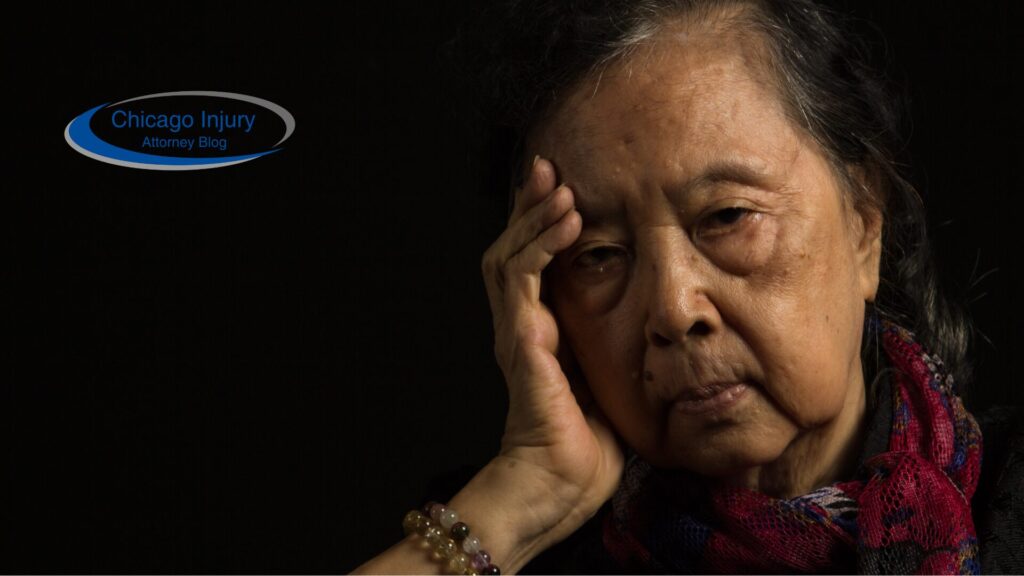Nursing home neglect and abuse are serious issues that can have devastating effects on residents. We will explore the different types of neglect and abuse that can occur in nursing homes, as well as the impact these actions can have on those who experience them. Recognize the signs of nursing home neglect and abuse, including physical, emotional, and behavioral indicators. Learn how to report suspected neglect or abuse and who to contact for help.
Understanding Nursing Home Neglect and Abuse
Understanding Nursing Home Neglect and Abuse is crucial for protecting vulnerable elderly individuals who may be subjected to various forms of mistreatment in care facilities. The abuse ranges from physical harm to emotional distress, and neglect can lead to serious health implications.
Physical abuse in nursing homes can include hitting, pushing, or inappropriate use of restraints, causing pain or injury to residents. Emotional abuse involves intimidation, humiliation, or isolation, which can have detrimental effects on mental health. Financial abuse, such as stealing money or belongings from residents, is also a prevalent issue. Neglect can manifest in lack of proper nutrition, hygiene, or medical care, endangering residents’ well-being. Legal actions can be taken against perpetrators, including criminal charges and civil lawsuits. Recognizing signs of abuse, reporting suspicions, and educating staff and family members are essential steps in preventing and addressing these incidents.
Types of Neglect and Abuse in Nursing Homes
Nursing homes can be hotspots for various types of neglect and abuse, including physical abuse, emotional abuse, sexual abuse, caregiver neglect, financial exploitation, and medical neglect. Recognizing these forms of mistreatment is critical in ensuring the safety and well-being of elderly residents.
Physical abuse in nursing homes can manifest through unexplained bruises, burns, fractures, or restraining marks on the residents. It can also involve force-feeding, improper use of physical restraints, or aggressive handling by staff members.
Emotional abuse may present as sudden changes in behavior, withdrawal, anxiety, depression, or fear. Verbal threats, humiliation, isolation, or manipulation are common forms of emotional mistreatment.
Sexual abuse, a particularly heinous form of harm, can include any unwanted sexual contact, advances, or activities towards vulnerable residents.
Impact of Neglect and Abuse on Residents
The impact of neglect and abuse on residents of nursing homes can be devastating, affecting their physical health, mental well-being, and overall quality of life. Instances of abandonment, basic needs neglect, personal hygiene neglect, and emotional neglect can lead to profound suffering among the elderly population.
Abandoned elderly individuals, for example, may experience feelings of loneliness, helplessness, and despair, which can exacerbate existing health conditions and hasten cognitive decline. When basic needs like nutrition, hydration, and hygiene are neglected, it can result in malnutrition, dehydration, infections, and skin breakdown, all of which significantly impact an individual’s physical health.
- For instance, a case study revealed that a neglected resident developed severe bedsores due to prolonged immobilization and lack of proper care.
- Emotional neglect, such as ignoring an elder’s emotional needs or subjecting them to verbal abuse, can lead to anxiety, depression, and deep emotional scars.
These real-life examples underscore the urgent need for enhanced monitoring, stricter regulations, and comprehensive training for staff to prevent and address neglect and abuse in nursing homes.
Recognizing Signs of Nursing Home Neglect
Recognizing signs of nursing home neglect is essential for identifying potential mistreatment and taking appropriate action to safeguard residents’ well-being. These signs may manifest as physical indicators, verbal cues, neglect signals, and emotional changes, including deteriorating personal hygiene.
Physical indicators of neglect can include unexplained injuries, bedsores, or sudden weight loss.
Verbal cues such as residents expressing fear or distress could also indicate mistreatment.
Neglect signals like unsanitary living conditions or lack of necessary medical care are crucial to note.
Emotional changes like withdrawal, depression, or sudden mood swings may highlight underlying neglect issues.
It is imperative for family members and caregivers to stay vigilant, document any concerning signs, and promptly address suspected neglect by reporting to the appropriate authorities or seeking legal advice.
Physical Indicators of Neglect
Physical indicators of neglect in nursing home residents can include unexplained bruises, untreated medical conditions, signs of malnutrition, and poor personal hygiene. Identifying these signs promptly is crucial for intervening in cases of abuse and neglect.
Unexplained bruises are often a prominent sign of neglect, as they may indicate physical abuse, mishandling, or falls that have occurred due to lack of supervision or assistance.
Untreated medical conditions, such as infections or bedsores, can point towards inadequate medical attention and care.
Signs of malnutrition, like sudden weight loss or dehydration, can be indicators of improper feeding and nutrition management.
Poor personal hygiene, such as unwashed clothes or unattended grooming needs, can suggest neglect in providing basic care and support.
Recognizing and documenting these signs through thorough assessments is crucial to safeguard the well-being of elderly residents in nursing homes.
Emotional and Psychological Indicators of Neglect
Emotional and psychological indicators of neglect in nursing home residents can manifest as sudden changes in behavior, withdrawal from social activities, unexplained fear or anxiety, and feelings of abandonment. Understanding these emotional cues is crucial for addressing underlying neglect issues.
Declining physical health, unkempt appearance, poor hygiene, and weight loss can also be linked to emotional neglect. This type of mistreatment can lead to feelings of helplessness, worthlessness, and a lack of trust in caregivers.
Individuals experiencing emotional distress may exhibit signs of depression, increased irritability, or mood swings. Establishing trust through active listening, offering emotional support, and facilitating social interactions can help residents cope with emotional neglect.
Interventions such as counseling, therapy, and support groups play a crucial role in addressing the underlying causes of emotional abuse and neglect in elderly individuals.
Identifying Signs of Nursing Home Abuse
Identifying signs of nursing home abuse requires a keen eye for physical and behavioral cues that may indicate mistreatment. These signs can range from unexplained injuries and bruises to sudden changes in behavior and emotional responses to triggers.
Physical indicators of abuse may include frequent falls, untreated wounds, dehydration, or malnutrition. These can be accompanied by unexplained weight loss or a decline in personal hygiene. On the other hand, behavioral signs may manifest as increased anxiety, withdrawal from social activities, or fear of specific staff members.
Various types of abuse, such as physical, emotional, sexual, or financial, can each leave distinct traces on elderly individuals. For instance, physical abuse may result in broken bones, while emotional abuse could lead to sudden mood swings and depressive episodes.
Physical Signs of Abuse
Physical signs of abuse in nursing home residents can include visible injuries, unexplained bruises, restraint marks, and signs of medical neglect. Recognizing these physical indicators promptly is essential for protecting vulnerable individuals from further harm.
Visible injuries, such as cuts, bruises, or burns in various stages of healing, can be a red flag for physical abuse. Unexplained bruises on different parts of the body, especially in areas not typically prone to injury, may suggest mistreatment. Restraint marks, like bruising or friction injuries from tight straps or ropes, are signs of potential physical restraint against the resident’s will.
Signs of medical neglect, such as untreated wounds, malnourishment, dehydration, or inadequate hygiene, should raise concerns. Documenting these signs meticulously and reporting them to the appropriate authorities is crucial to ensure the well-being and safety of elderly residents.
Behavioral Signs of Abuse
Behavioral signs of abuse in nursing home residents can include sudden changes in behavior, fear of specific caregivers, withdrawal from social interactions, and signs of emotional distress. Understanding these behavioral cues is crucial for addressing potential abuse cases effectively.
Verbal abuse can manifest in the form of demeaning language, yelling, or insults towards the elderly residents, leading to feelings of worthlessness and humiliation. Neglect may be indicated by poor hygiene, untreated medical conditions, or malnutrition, all of which can have serious consequences on the health and well-being of the individuals.
Emotional distress may result in residents showing symptoms such as depression, anxiety, or agitation. When encountering these behaviors, it is essential to approach the residents with empathy and understanding, creating a safe space for them to share their concerns.
If you suspect abuse, it is important to report it to the appropriate authorities, such as the nursing home administration or adult protective services, to ensure the safety and well-being of the residents.
Reporting Suspected Nursing Home Neglect or Abuse
Reporting suspected cases of nursing home neglect or abuse is a critical step in protecting vulnerable residents and holding perpetrators accountable. Knowing who to contact and understanding the necessary steps to take can help prevent further harm and ensure swift intervention in such instances.
When reporting suspected cases of neglect or abuse in nursing homes, it is important to act promptly. Most states have mandatory reporting laws that require healthcare professionals, caregivers, and even individuals to report any signs of mistreatment within a specific timeframe, usually 24 to 48 hours of discovery. Early reporting is crucial to stop ongoing abuse and prevent future incidents.
Who to Contact
When faced with suspected cases of nursing home neglect or abuse, knowing who to contact is crucial for initiating the necessary interventions and legal actions. Healthcare providers, law enforcement agencies, adult protective services, and legal representatives can all play key roles in addressing these sensitive issues.
Healthcare providers, such as nurses, doctors, or social workers, are often the first point of contact to report concerns and ensure the well-being of the residents. Law enforcement agencies, like the police or local authorities, may step in to investigate severe cases involving criminal activities. Adult Protective Services, under the Department of Health and Human Services, specialize in safeguarding vulnerable adults and can provide resources and support. Legal representatives, including lawyers specializing in elder law, can offer advice on pursuing legal recourse and protecting the rights of the individuals affected.
Steps to Take in Response to Suspected Neglect or Abuse
In response to suspected cases of neglect or abuse in nursing homes, swift action is crucial to protect residents and prevent further harm. Steps may include documenting evidence, contacting relevant authorities, ensuring the safety of the individual, and seeking legal assistance to address the situation effectively.
When suspicions arise, individuals must maintain a detailed record of observed incidents, conversations, and any physical or emotional changes in the resident. This documentation serves as crucial evidence to support their claims and investigations. Immediate intervention is paramount, as any delay can exacerbate the risks faced by vulnerable individuals. Collaborating with caregivers, social workers, and legal professionals can provide valuable support and guidance in navigating the intricate process of addressing elder abuse or neglect.
Frequently Asked Questions
What are the signs of nursing home neglect?
Some common signs of nursing home neglect include unexplained injuries, poor personal hygiene, malnutrition, and changes in behavior or mood.
How can I recognize signs of nursing home neglect?
Some key signs of nursing home neglect to look out for include physical injuries, poor living conditions, lack of proper medical care, and emotional distress in residents.
What should I do if I suspect nursing home neglect?
If you suspect nursing home neglect, it is important to document any signs or incidents and report your concerns to the nursing home administration or local authorities. You may also consider seeking legal advice.
What are my legal options for responding to nursing home neglect?
If you or a loved one has been a victim of nursing home neglect, you may have legal options for seeking compensation for damages such as medical expenses, pain and suffering, and emotional distress. Consulting with a personal injury or nursing home abuse lawyer can help you understand your rights and options.
How can I ensure that my loved one is receiving proper care in a nursing home?
To ensure that your loved one is receiving proper care in a nursing home, it is important to stay involved and regularly check in on their well-being. You can also ask questions, request to see care plans, and speak with staff members to ensure that your loved one’s needs are being met.
What steps can I take to prevent nursing home neglect?
To help prevent nursing home neglect, you can thoroughly research and visit potential nursing homes, stay involved in your loved one’s care, and report any concerns or incidents immediately. You can also advocate for stricter regulations and oversight of nursing homes in your community.





